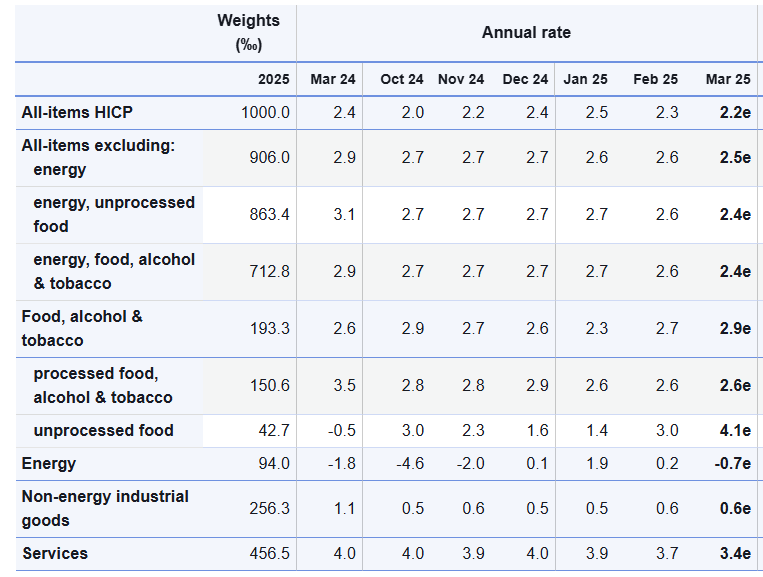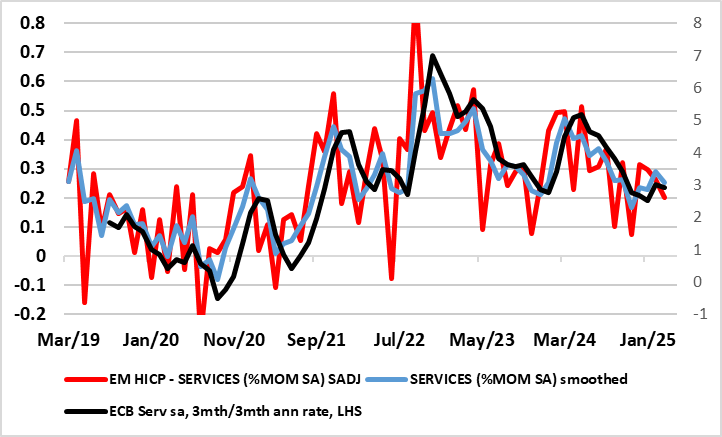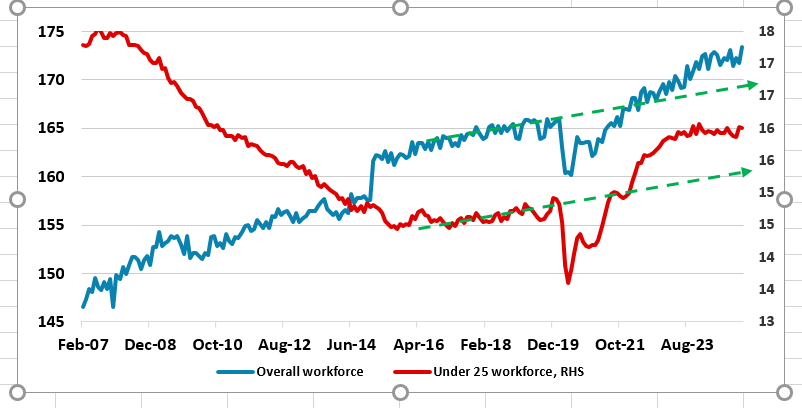EZ Data Review: Headline Edges Lower Again With Friendlier Services and Labor Market Messages?
Largely as expected, there was more supportive news in the March flash HICP numbers (Figure 1), with the headline down a notch and core down 0.2 ppt (the former to 2.2% and hence the lowest since last autumn). Perhaps more notably services inflation slowed more clearly, dropping 0.3 ppt to 3.4%, a 33-mth low and belatedly chiming with what adjusted m/m figures have been implying of late (Figure 2. Indeed, the data add to the case of more ECB easing, the question being when. It could be pointed out that fresh labor market data also out today show a fresh drop to a new record-low jobless rate, something that may apparently encourage the hawks, but the drop largely reflects a further increase in the workforce (Figure 3), this possibly being a major factor in the manner in wage inflation has been falling.
Figure 1: Headline Slips Back Further as Services Resilience Cracks Again

Source: Eurostat, chg y/y
Despite higher food inflation, partly offset by a drop in fuel costs, March’s flash details showed, most notably, a further and clearer easing in what had previously been seemingly relatively stable services inflation, down 0.3 ppt to a 33-mth low of 3.4%. The softer core and services messages have been flagged by shorter-term price momentum data and persistent price gauges which already suggest that core and even services inflation have slowed and are running around target (Figure 2). The March headline chime with implicit ECB thinking that pointed to a 2.3% headline and 2.5% core average in the current quarter.
Figure 2: Services Inflation Already Around Target in Shorter-Term Dynamics?

Source: Eurostat ECB, CE
As we have noted previously, there are some signs in retailing surveys suggesting disinflation may have stalled. But this may be of increasing secondary importance to most of the ECB Council as a) inflation is already consistent with target; b) cost pressures are under control and may indeed be easing when it comes to softening wage inflation possibly helped by a swelling workforce (Figure 3) and c) a fresh and more demand driven disinflation could be triggered by what seems to be a weaker real economy backdrop that could also exacerbate financial stability risks and which risks being accentuated on the downside by a possible trade war.
Figure 3: Workforce Continues to Grow – Helping Temper Wage Inflation?

Source: Eurostat, CE, millions